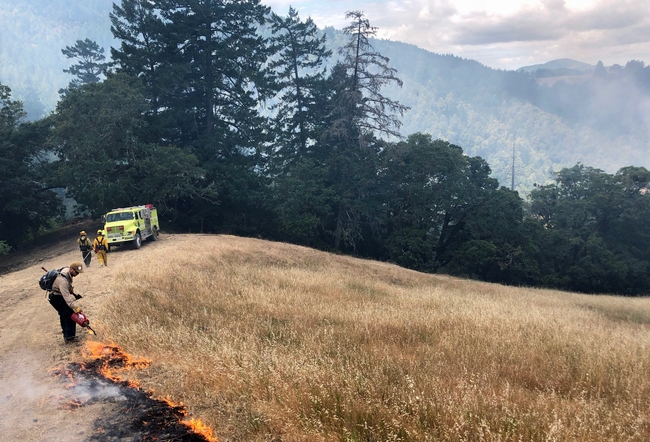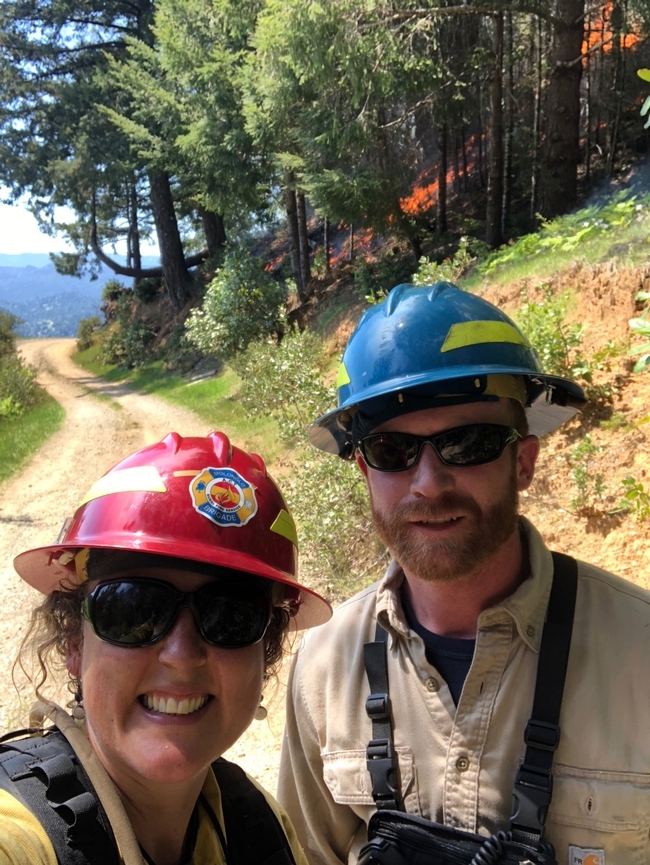At UCCE’s suggestion, Humboldt waives air-quality fees for public benefit burning
“I thought you all might enjoy this bit of good news from Humboldt County. Yesterday reminded me of the important role we at UCCE can play in these types of local issues,” wrote Lenya Quinn-Davidson, UCCE area fire advisor in Humboldt County.
Concerned about habitat loss and fuel buildup on private lands in Humboldt County, Quinn-Davidson and Jeff Stackhouse, UCCE livestock and natural resources advisor, recently formed a Prescribed Burn Association.
Thanks to Senate Bill 1260, which was signed into law last year, air districts are receiving grants from the California Air Resources Board to support local prescribed fire programs.
Stackhouse and Quinn-Davidson attended the North Coast Unified Air Quality Management District Board meeting Sept. 18 in Weaverville to suggest their district subsidize the air quality permit fees for prescribed burners.
“Our district has decided to use some of these grant funds to subsidize air quality permit fees for prescribed burners in the district. This is welcome news to those of us with the PBA who have been working for the last year to alleviate air quality permit fees, which can be $250 to $1250 for bigger projects. For our PBA burns, air quality permit fees are one of our biggest project costs, and now those fees will be waived.”
The air board's original plan was to subsidize projects with a focus on wildfire risk reduction. At the meeting, she and Stackhouse encouraged them to broaden the scope and include all projects that have a public benefit, including burns focused on habitat restoration, range improvement, forest improvement, cultural resources, etc., in addition to fuels reduction.
“We suggested that they tie the subsidy program to Public Resources Code 4475, which was amended through SB1260 to include an expanded definition of ‘public benefit burning.' They accepted our suggestion and amended the rule to reflect this broader suite of project types, which covers most of the great burning we're all doing in the North Coast: oak woodland restoration, medusahead/starthistle/blackberry control, coyote brush/coastal rangeland/prairie burning, understory fuels reduction, etc. With this cost relieved, we can start thinking about planning more projects and bigger projects! Yesterday, a 300-acre burn would have cost $1,250 (permit) + $65 (smoke management plan). As of today, those costs will be $0.”
The district's proposal also recommended excluding federal agencies and timber companies from the subsidy program, but Quinn-Davidson and Stackhouse asserted that any entity doing work that benefits the public should have equal access to the subsidy. In response, the Board voted to expand the program to include federal agencies and timber companies.
“Based on what air district staff said at the meeting, it sounded like this would save landowners about $14,000 to $18,000 per year in fees district-wide. I think it'll be even more than that in the coming years, with all the interest we have in prescribed fire,” Quinn-Davidson said.
“We're still working with the district to think about longer term solutions to their fee structure, but in the meantime, this is a fabulous step in the right direction!” Quinn-Davidson said.


